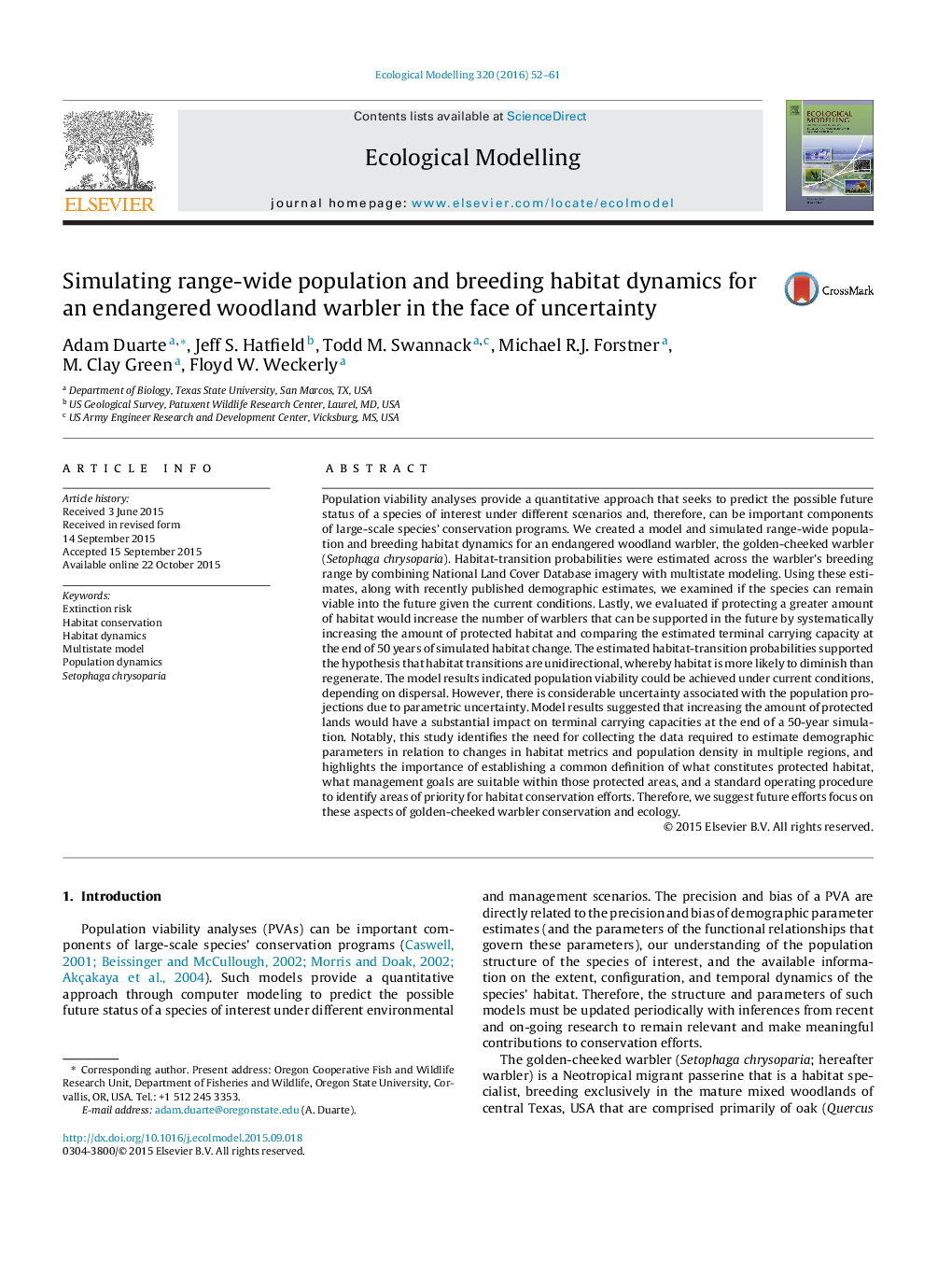| Article ID | Journal | Published Year | Pages | File Type |
|---|---|---|---|---|
| 6296234 | Ecological Modelling | 2016 | 10 Pages |
â¢A range-wide population and habitat model for golden-cheeked warblers was developed.â¢Impact of habitat change and demographics on population dynamics was simulated.â¢Connectivity through natal-site dispersal is needed for population persistence.â¢Protecting large tracts of breeding habitat is critical for conservation efforts.â¢Regional demographic estimates and habitat conservation protocols are needed.
Population viability analyses provide a quantitative approach that seeks to predict the possible future status of a species of interest under different scenarios and, therefore, can be important components of large-scale species' conservation programs. We created a model and simulated range-wide population and breeding habitat dynamics for an endangered woodland warbler, the golden-cheeked warbler (Setophaga chrysoparia). Habitat-transition probabilities were estimated across the warbler's breeding range by combining National Land Cover Database imagery with multistate modeling. Using these estimates, along with recently published demographic estimates, we examined if the species can remain viable into the future given the current conditions. Lastly, we evaluated if protecting a greater amount of habitat would increase the number of warblers that can be supported in the future by systematically increasing the amount of protected habitat and comparing the estimated terminal carrying capacity at the end of 50 years of simulated habitat change. The estimated habitat-transition probabilities supported the hypothesis that habitat transitions are unidirectional, whereby habitat is more likely to diminish than regenerate. The model results indicated population viability could be achieved under current conditions, depending on dispersal. However, there is considerable uncertainty associated with the population projections due to parametric uncertainty. Model results suggested that increasing the amount of protected lands would have a substantial impact on terminal carrying capacities at the end of a 50-year simulation. Notably, this study identifies the need for collecting the data required to estimate demographic parameters in relation to changes in habitat metrics and population density in multiple regions, and highlights the importance of establishing a common definition of what constitutes protected habitat, what management goals are suitable within those protected areas, and a standard operating procedure to identify areas of priority for habitat conservation efforts. Therefore, we suggest future efforts focus on these aspects of golden-cheeked warbler conservation and ecology.
